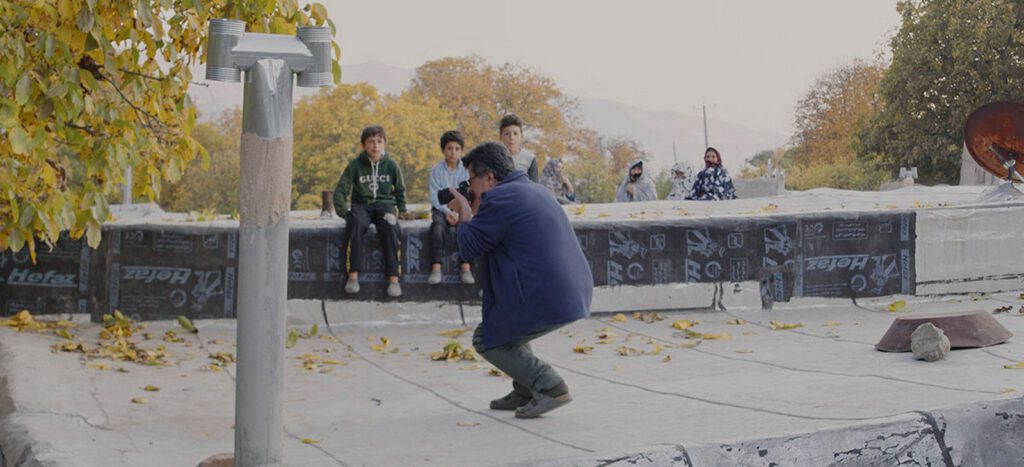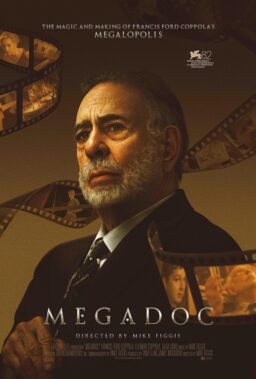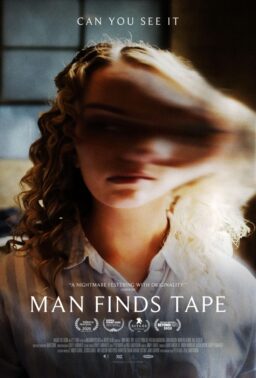“The World Is Too Much with Us,” the title of a Wordsworth sonnet that has nothing to do with cinema, has been running through my head since the beginning of this year’s New York Film Festival, as if to signify the way that faraway crises in 2022 have of intruding on our ordinary pursuits, including filmgoing. Examples: Shortly after texting a young Russian filmmaker friend offering my couch if he needs a refuge from Putin’s draft, a Russian critic at the festival bemoans to me that members of his extended family have been swallowing the Kremlin’s propaganda to the point that some are ready to die in Ukraine. Across the globe a few days later, Brazilian friends are posting and texting their concern over the strong showings that rightist candidates, including President Jair Bolsonaro, made in last Sunday’s election.
And then there’s Iran.
Cinema has taken me there seven times since 1997, and I’ve followed recurrent protests and popular uprisings and heard predictions that every new one was sure to topple the Islamic regime. But this time really feels different. Which is not to say that the nationwide protests that have swept Iran since the death-in-custody of young Mahsa Amini are guaranteed to produce a new Iranian Revolution any more than their predecessors did. Desperate to cling to power, the nation’s sclerotic rulers have shown they’re not above using the most brutal means to suppress revolts. Yet the current protests, especially because they’re led by women and the young and have a strong economic impetus in addition to a moral/political one, seem to point toward the inevitable overthrow of the mindset that produced the 1979 Revolution.
Beyond that, I’ll venture only one prediction: The current moment will mark the end of one era of Iranian filmmaking and the beginning of another. Till now, filmmakers working within the system have been obliged to deal with the government’s numerous restrictions and controls in order to get their films made and seen (and have produced some incredible work given these punishing conditions). Going forward, we may see much more outright defiance on the part of filmmakers even as the government flails to tighten the screws, more productions made outside the system, and films that are openly angry and directly confrontational.
At this juncture, there’s no Iranian filmmaker more symbolically or practically significant than Jafar Panahi. Celebrated globally since his debut film, “The White Balloon,” won the Camera d’Or at Cannes in 1995 and became Iran’s first international art-house hit, Panahi ran afoul of the Islamic Republic in the protests that followed the “stolen election” of 2009 and was subsequently given a draconian sentence that included a 20-year ban on filmmaking. His retort was to go on making films, but to do so outside the system and then smuggling them to foreign festivals. Beginning with “This Is Not a Film” (2011), all four of the movies he made prior to the new “No Bears” have done strong art-house business around the world.
Panahi’s original sentence also included six years in prison, but the regime didn’t enforce this; though he was nominally under house arrest, his subsequent films showed him ranging around Tehran (“Taxi”) and other parts of Iran (“Closed Curtain,” “3 Faces”). But that relative freedom came to an abrupt end in July when he was detained after visiting a prison to inquire about the situation of the equally defiant Mohammad Rasoulof, who’d been arrested a few days earlier; that the judiciary then announced that Panahi would be made to serve his six-year sentence was seen as part of a general crackdown by the current hardline government, an effort that preceded the current firestorm of protests.
Though Panahi’s passport was confiscated years ago, he’s long made it clear that he has no desire to move abroad and try to build a career there. “No Bears,” though, finds him pressing against the borders that constrain him. Like other films including Asghar Farhadi’s “A Separation” and “Hit the Road” by Panah Panahi, the director’s son, this new film hinges on a desire by some Iranians to leave the country to escape its oppressions. And that dramatic premise here plays out on two geographic and narrative fronts.
Again playing himself, Panahi begins the tale in a village on the Turkish border, directing a film that is being staged in Turkey (and overseen by him via video) about an Iranian couple who are trying to make their way to Europe. In a striking scene, he goes up on a hill at night and gazes over at the lights of the Turkish towns on the other side of the border. So near, yet so far away. He looks, but doesn’t step across the border. You can practically hear the thoughts of escape flashing through his mind.
The most interesting part of this drama, though, takes place on the Iranian side of the border and doesn’t involve characters who are trying to leave the country. The village where Panahi’s renting a room is embroiled in a conflict over two men who have claims on the same young woman. One was betrothed to her at birth, a local custom; the other is the guy she actually wants to marry. Because the villagers think Panahi has filmed the two lovers, their leaders (all male, of course) demand his footage and then an oath from him that he is loath to give.
More than his other recent films, “No Bears” shows the influence of Panahi’s mentor Abbas Kiarostami, especially the Kiarostami films “Through the Olive Trees” and “The Wind Will Carry Us.” But perhaps most significant is that, rather than impugning the Islamic regime here, Panahi, like Kiarostami and Mohsen Makhmalbaf before him, is interrogating the deep structures of Iran’s pre-modern, non-urban culture. The villagers’ antiquated morals and worldview, he implies, are what’s imprisoning them, not any political strictures. It’s a resonant message at a time when authoritarian leaders in Russia, Brazil, the U.S. and other countries evidently have the backing of substantial portions of their populations.
Very much in line with his last four, made-in-secret features, “No Bears” is another penetrating, highly accomplished work by a master filmmaker. As such, it may well belong to the outgoing era of Iranian filmmaking. But one hopes that the next era will have room for the understated wit that Panahi often displays. This film’s title, incidentally, comes from a scene when the director is warned to avoid a certain area at night because of the danger of bears. Later, he asks about the same path and is told, “oh, there are no bears!”—another sign that many of the perils plaguing this place are imaginary, deriving from ancestral fears.

Oddly enough, there are bears in Cristian Mungiu’s “R.M.N.,” but saying anything about their place in the Romanian drama might constitute a spoiler, so I won’t. In a way, it’s strangely apposite to be reviewing this film along with Panahi’s because they’d be great on a double bill, followed by a vigorous audience discussion. The only problem being that the audience likely to be attracted to such an event would be us educated urban elites, not the followers of Putin, Bolsonaro, Trump, or the mullahs.
Like Panahi, Mungiu is drilling down into the bedrock of ancient beliefs and bigotry that survive in a rural area—here, Transylvania. The place, though, is not entirely cut off from the modern world, and that may be part of the problem. As we quickly see, it has two very up-to-date businesses, a sleek slaughterhouse which dispatches flocks of sheep daily and a bread factory that supplies the one of the town’s favorite comestibles. Run by two smart young women, the latter enterprise has a problem: to get an EU grant it needs to employ more people, but the locals don’t care to work for the minimum wages it pays (which spurs some to decamp to Germany in search of better pay), so the women elect to bring in two immigrant workers from Sri Lanka.
That sets off an explosion of anger and xenophobia among many of the locals. Ironically, this happens in a place where the culture is already mixed: in addition to the native Romanians, there are a good number of Hungarians (the film’s dialogue is in both languages, as indicated by subtitles in different colors: a device I don’t think I’ve ever encountered before). But these folks are not ready for any other interlopers. Some proclaim that that they got rid of the Roma and don’t need to have to accommodate these Muslims (never mind that the mild-mannered, hard-working Sri Lankans are Christians). The outburst of racist intolerance climaxes in a brilliant scene where Mungiu’s camera gazes for an unbroken 17 minutes at a furious town meeting where even a local doctor avers that the foreigners carry dangerous pathogens.
Unlike Mungiu’s previous masterpieces “4 Months, 3 Weeks and 2 Days” and “Graduation,” “R.M.N.” focuses on a collective rather than individuals (though it contains some very memorable characters), which makes it feel perhaps less focused and impactful than the earlier films. But its analysis of current European mores and challenges is striking and intelligent, furthering his reputation as one of the continent’s most accomplished directors.

Laura Poitras’ “All the Beauty and the Bloodshed” arrived at the New York Film Festival to occupy the festival’s Centerpiece slot having recently won the Golden Lion at the Venice Film Festival. After that victory, I heard some observers ruefully wondering: how could a documentary take one of cinema’s most prestigious prizes—it had only happened once before—especially when the competition contained narrative features like Todd Field’s “TÁR”?
Having now seen both films, I find myself in total agreement with the Venice jury. Interestingly, both works deal with the world of high art: “All the Beauty and the Bloodshed” with the acclaimed art photography of Nan Goldin, “TÁR” with the realm of classical music personified by a superstar conductor brilliantly played by Cate Blanchett. Now counting myself among the thin ranks of “TÁR” skeptics, I think that the aural and visual surfaces of Field’s film are indeed as dazzling and impressive as Blanchett’s phenomenal performance, but that they also serve to disguise a creeping lack of coherence in the narrative’s view of its central character; in the end, it’s as if the male auteur can’t decide whether to celebrate or condemn his female protagonist.
“All the Beauty and the Bloodshed” contains no such indecision, largely, no doubt, because there’s effectively no conceptual distance between the auteur documentarian and her artist subject, both female; they’re working as one. At their NYFF press conference, the photographer and the filmmaker noted that Goldin had begun an autobiographical film and that at a certain point Poitras was brought in to take the reins. According to the artists, each was a great admirer of the other before they began to work on this project together; the result of their sympathetic engagement is a collaboration of rare beauty and power.
Like a double helix, the film’s fascinating structure intertwines two main strands. One has to do with Goldin’s fearless campaign to have major museums and arts institutions cut their ties with the Sackler family, which, having benefited enormously from an opioid-use crisis that it largely created, has given millions to spread its name on cultural entities across the globe. The first time we see her engaged in this politically charged enterprise, a few years back, Goldin and friends are staging a demonstration in the Sackler-branded wing dedicated to ancient Egypt in New York’s Metropolitan Museum of Art, and you have to wonder: Given that the Sacklers’ wealth rivals that of the Pharaohs, can any artist—even one as acclaimed as Goldin—hope to overthrow their influence in the money-hungry realm of the institutional arts?
The narrative’s other strand concerns Goldin’s childhood in a troubled family and subsequent career as an artist whose work often found beauty in other troubled lives. The main character in the earlier element is Nan’s adored older sister Barbara, whose rebellion in the conformist world of ‘50s suburbia got her committed to mental institutions—even while one doctor opined that her mother was more deserving of hospitalization—and who committed suicide at age 18. These memories obviously continued to haunt Goldin even as she began to buck establishment arts conventions by building a career with photographs and slide shows depicting the lives of junkies, sex workers (herself included) and other misfits, as well chronicling the predations of AIDS in New York’s downtown arts scene in the ‘80s. When she started, gallery owners dismissed her work as garish and vulgar; but as tastes changed, its honesty and formal rigor and originality made her one of America’s most celebrated photographers.
Having named Laura Poitras’ “Citizenfour” the best film of the last decade, I continue to be amazed at her daring and artistic brilliance in taking on some of America’s most formidable power structures. (Here her notable collaborators include editors Joe Bini, Amy Foote, and Brian A. Kates.) In “All the Beauty and the Bloodshed,” she’s found a subject/partner no less intrepid and charismatic than Edward Snowden. And it gives away nothing to note that Goldin’s dogged campaign meets with unlikely success as the Sackler name is ripped from the facades (and donor rolls) of, first, the National Portrait Gallery in London and later other institutions, including, ultimately, the Met. These heartening victories now find their ideal commemoration in the collaboration of two extraordinary artists.












